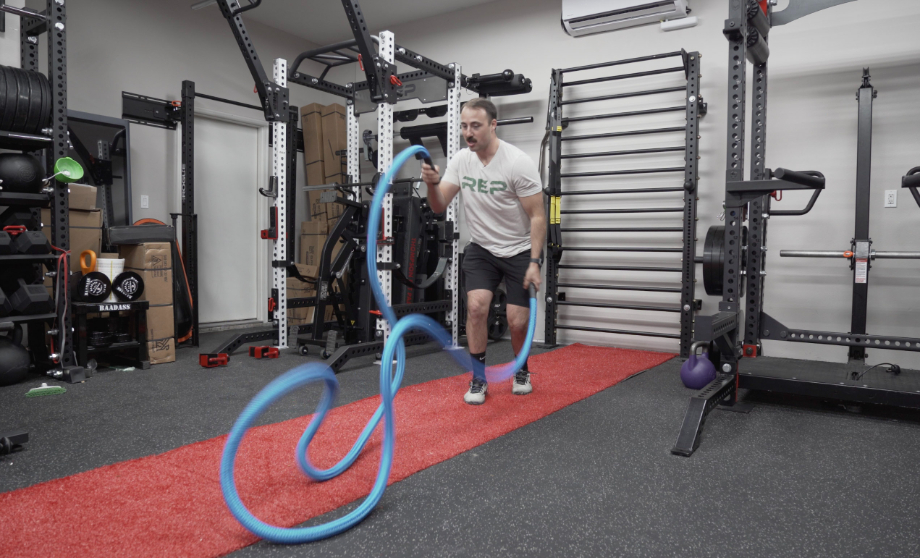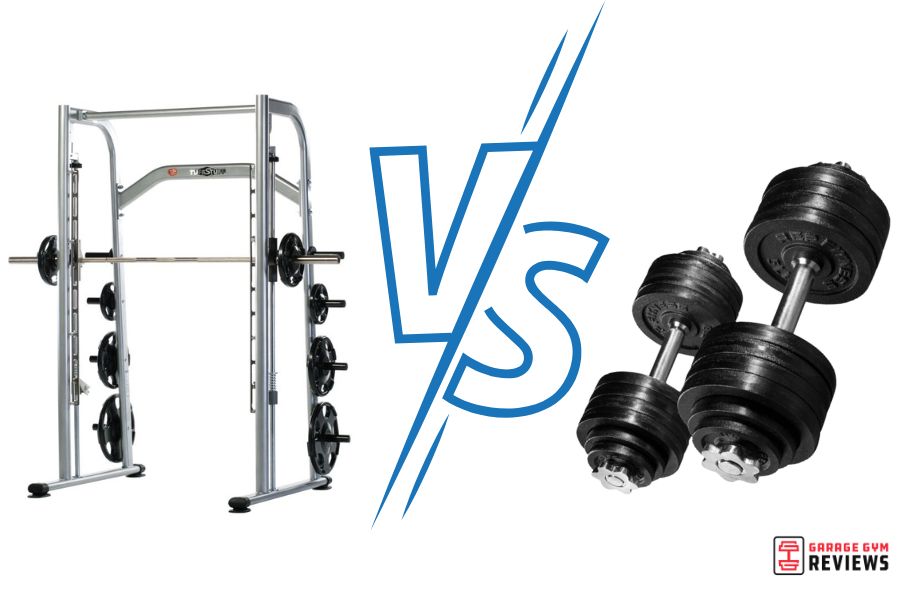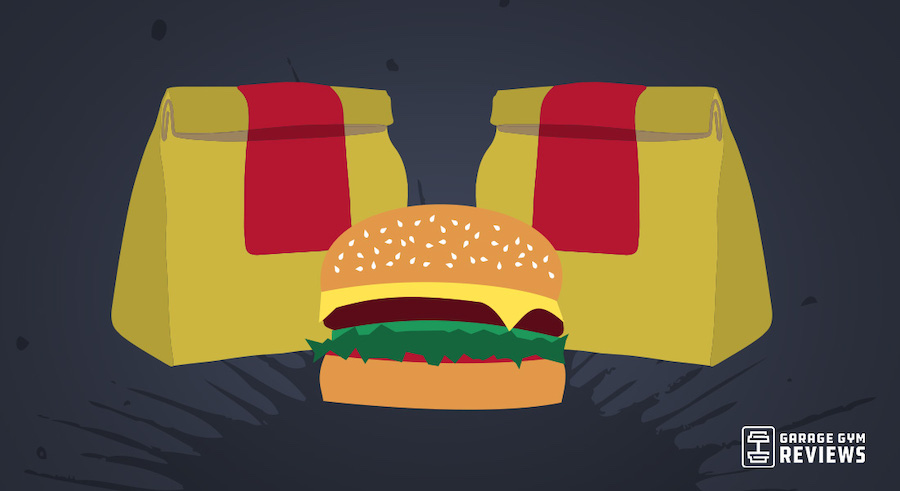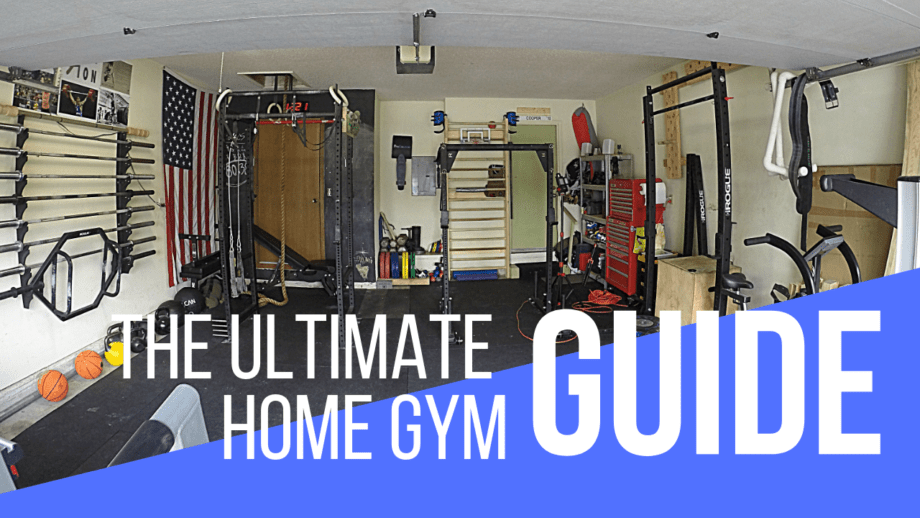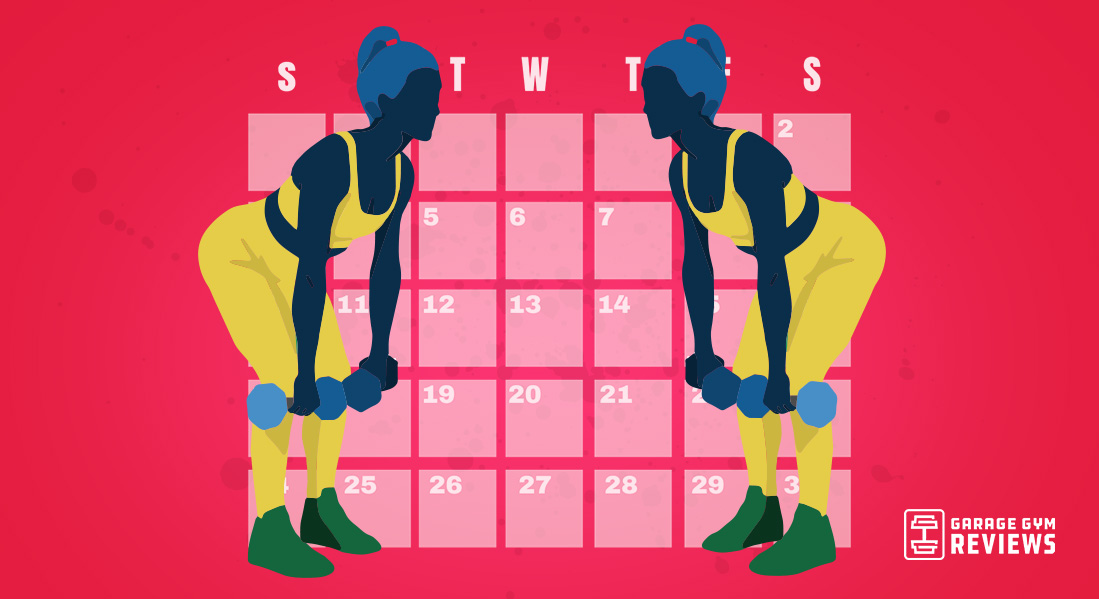Battle ropes have become a popular gym training tool, likely because they’re versatile and fun. You’ve probably seen your favorite athletes training with battle ropes on Instagram. Maybe your friend loves using them at their commercial or CrossFit gym. Being a loyal home gym user doesn’t mean you have to miss out on all the battle rope fun. We’ve previously written articles that have gone in depth on the benefits of battle rope training, battle rope exercises, and the best battle ropes for home gyms.
Despite all this great information, you may still be wondering: Why are there so many options? And how do I pick a length and thickness? We’ll answer those lingering questions and revisit the benefits of battle rope training and the best battle ropes. This will be a one-stop shop for all the battle rope information: benefits, battle rope sizing, and the best battle ropes for your home gym.
Why Use Battle Ropes?
Battle ropes are a great low-impact workout with lots of surprising benefits, whether you’re doing traditional double-arm slams or battle rope jumping jacks. If you want to see more in-depth info on battle rope benefits, check out our full article. We’ll hit the highlights here before helping you figure out which size ropes to purchase.

Great for Cardio
Running is not for everyone, and the good news is that it doesn’t have to be! A study published in February of 20221, found that short 15-minute HIIT-style battle rope workouts produced similar aerobic benefits as treadmill workouts and cycle ergometer workouts. Study participants improved their aerobic performance, measured via upper-body maximal oxygen consumption (Vo2 max), after working out three times per week for three weeks. That’s just 45 minutes per week to get better heart health.
Battle ropes are versatile, too! You can easily incorporate a variety of exercises into your battle rope workout programming. Battle ropes can be easily modified to be completed in a seated position. A December 2018 study2 found that peak heart rates, as a percentage of maximum heart rate, were not significantly different between the standing and sitting battle rope protocols. They proposed battle ropes as a solid alternative to achieving aerobic exercise recommendations for those who are unable to perform aerobic exercise on bikes or treadmills.
Low-Impact
Battle ropes increase your heart rate and activate large muscle groups without the repeated pounding associated with running. When you run, your feet are repeatedly landing on the ground, placing strain on your joints. When you use battle ropes, your feet can stay planted on the ground, decreasing impact—unless you choose to add in jumping.
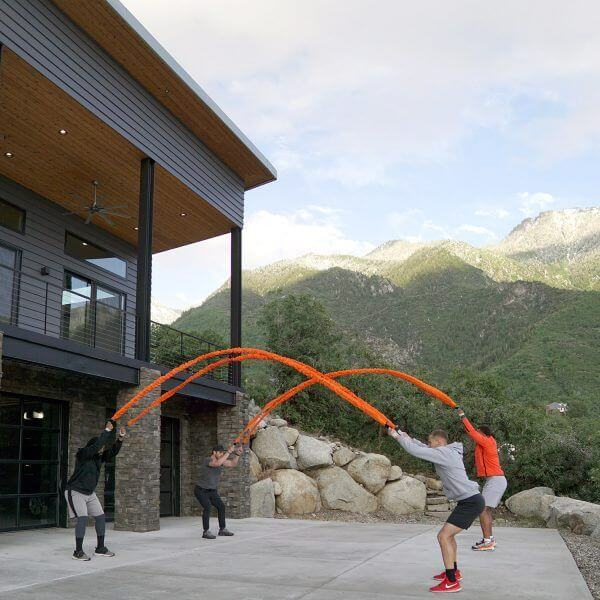
Great for Beginners
Battle ropes are great for beginners because they come in a variety of sizes, so you’ll be able to find one appropriate for your skill level. Even better, you can get a great full-body workout in as little as 10 minutes. In 2015, researchers3 put physically active people through a quick 10-minute battle rope workout. Even better, they didn’t even have to work most of the 10 minutes. Participants only had to work for 15 seconds and then rested for 45 seconds. These short workouts were determined to be vigorous-intensity and met the threshold for improving cardiorespiratory fitness. That’s just 150 seconds of work, making it a great place for beginners to start.
Portable and (Sometimes) Affordable
When you’re not using battle ropes, they can easily be stored away without taking too much space in your home gym. You can even pack them up and take them with you to work out outside of your home gym (although we’re not sure why you’d do that). There are a variety of lengths, so you can find one that will work in your space. Remember, the rope will be wrapped around an anchor point, so you’ll cut the length in half when determining how much space you need to use a rope.
Ropes can be purchased on Amazon for under $50. That’s a much more affordable price point than budget cardio equipment like treadmills, bikes, and ellipticals.
Questions to Ask Yourself Before You Buy
1. How much space do I have? This is an important factor in determining battle rope length. When thinking about how much space you need, remember the rope will be wrapped around an anchor. So, the functional length is half the rope plus 5 feet.
2. Where will I be using the battle rope? This will help determine what material is best for you. For example, if you plan to use it on a concrete floor or outside, you will likely need a rope with a protective sleeve or one made of a more durable material than if you’re using it on industrial gym flooring.
3. Who will be using the battle rope? This factors into your decision on both length and thickness of the rope. You’ll want to know everyone’s basic fitness level and general hand size if you’re purchasing one that will be used by multiple people.
4. What fitness goal do I want to accomplish with battle ropes? This information will help you figure out which thickness of rope to purchase.
How to Choose Battle Ropes: 3 Key Factors to Evaluate
You’ve decided you want to add a battle rope to your home gym. You’ve made a great decision and checked out our article on the best battle ropes. Unfortunately, you’re still a little confused because you don’t know which size to purchase. Here are the main things to consider when finding the right battle rope for your home gym:
Material
There are two main options for battle rope material: natural and synthetic. Natural ropes are generally made of manila. Manila ropes were the most popular before companies began making synthetic fiber ropes. Natural fiber ropes have a tendency to shed, though, which will make a bit of a mess in your gym. Most modern battle ropes are made with synthetic fibers, since they are cheaper than natural fiber ropes and won’t shed.
Poly dacron is the main synthetic fiber used for making battle ropes. Poly dacron, sometimes called polydac, is a combination of polypropylene and dacron, a type of polyester. Most of the ropes from our roundup of best battle ropes are made of poly dacron. It is a durable material that is resistant to wear and water. A high-quality poly dacron rope can be used both inside and outside and last a lifetime. Unfortunately, poly dacron can vary wildly in quality and brands aren’t exactly upfront about using the cheap stuff.
Does my rope need a protective sleeve? A high-quality rope should hold up well with or without a sleeve. Some ropes come with a protective sleeve which can help prevent fraying and improve the rope’s durability, so it wouldn’t hurt if you know you’re going to be rough on your rope. Plus, they make the rope available in more fun colors. We know an important part of your garage gym is how everything looks.
Bottom line: Unless you are adamant about using natural fibers and willing to pay more for it, go with poly dacron rope from a trusted brand.
Length
Battle ropes come in three lengths: 30, 40, and 50 feet. You may be able to find ropes shorter than 30 feet, but at that point they’re too short to provide the intended stimulus and you should look for a different exercise. You’ll need to consider two main things when determining which length to purchase. First, how much space do you have available? Second, consider the skill and fitness level of the people using the rope.
To determine the space requirements for a battle rope you will do some simple math: length of the battle rope divided by 2, then add 5 feet. This is because when you use a battle rope it will be wrapped around an anchor point, dividing it in half. Your battle rope anchor can be a tree, a squat rack, or even a heavy kettlebell. Functionally, the 50-foot rope becomes two 25-foot ropes, one for each hand. Then you’ll add 5 feet so you have room to comfortably work out. The 40-foot rope becomes two 20-foot ropes and the 30-foot rope becomes two 15-foot ropes. If you add the recommended 5 feet to each of those numbers you get required space of 30 feet (50-foot rope), 25 feet (40-foot rope), and 20 feet (30-foot rope).
Next, we need to consider the fitness and skill level of the people who will be using the battle rope. Each length of rope has advantages and disadvantages. Generally, longer ropes will move more fluidly. Shorter ropes have less fluidity because there is less space for the undulating waves to travel down the rope and they may be cut off prematurely and be jarring. Longer ropes will be heavier. Heavy ropes are more difficult to move and create waves. For example, the weights of the Titan battle ropes are 18, 23, and 29 pounds for the 30-, 40-, and 50-foot ropes, respectively.
If you have the space and baseline fitness level, go for a 50-foot rope. If you are a beginner and worried about the heavier rope, I would recommend a 40-foot rope. I would get a 30-foot rope if it is the only size your space can accommodate.
If you’re realizing you may not have enough space for a traditional battle rope, try a freestanding battle rope. Our favorite is the Hyperwear Hyper Rope. It doesn’t require an anchor and is designed for smaller spaces.
Bottom line: Get a rope with a 50-foot length if you can swing it space and fitness wise. Get a 40-foot one for beginners, and a 30-foot rope if it is the only one your space will allow.
Thickness
Most battle ropes are available in two thicknesses, 1.5-inch and 2-inch diameter. You can also find them in sizes larger than 2 inches, but that’s going to be overkill for almost all users. Anything over 2 inches will be too thick for most people’s hands to wrap around the ends of the rope. The thicker the rope, the heavier and more difficult it will be to use.
When deciding between 1.5-inch and 2-inch thick ropes, think about two main things: the hand size of the people who will be using the rope and what fitness goal you are trying to accomplish with the battle rope.
For cardio and HIIT-style workouts, 1.5-inch ropes are recommended. If you are looking to accomplish more strength training and improve your grip strength, try the 2-inch rope. If the people using this battle rope have smaller hands, I would stick with a 1.5-inch rope regardless of the fitness goal, as holding the ends of the rope could be too difficult with a 2-inch rope.
Bottom line: Get a 1.5-inch rope for cardio and a 2-inch rope for strength and improving grip strength, or if you have smaller hands.
How to Choose Battle Ropes: Final Thoughts
There are lots of battle rope options and it can be overwhelming trying to decide which material, length, thickness, and brand is best for your home gym. We’ve tried to break it down to help you come to the best decision, because a quality battle rope should last a long time.
Before you purchase a battle rope, you’ve got to make three decisions: material, length, and thickness. Most people will do best with a poly dacron rope of 1.5 inches. The length is mainly going to be determined by the space you have available and your fitness level. Beginners are going to want a shorter rope because it’ll be lighter and easier to move, but don’t go any shorter than 30 feet.
What are the best battle ropes?
Now that you’ve figured out the best material, length, and thickness for you, revisit our “Best of ” list from our roundup of the best battle ropes for home gyms:
- Best Overall Battle Rope: REP Fitness Sleeve Battle Rope
- Best Budget Battle Rope: AmazonBasics Battle Rope
- Best Battle Rope for Beginners: Titan Fitness Battle Rope
- Best Battle Rope with Anchor Strap: Stroops Son of the Beast
- Best Freestanding Battle Rope: Hyperwear Hyper Rope
- Most Durable Battle Rope: Profect Sports Pro Battle Rope
- Best Battle Rope on Amazon: GarageFit Battle Rope
- Best Battle Rope Alternative: Inertia Wave
How to Choose the Best Battle Ropes: FAQs
What is the best length for battle ropes?
I can’t answer that question for you, which I know is not what you wanted to hear. There is no “best length” for battle ropes. That is going to depend mainly on your fitness level and the space you have available. I wouldn’t recommend going any shorter than 30 feet, however.
What is the best weight for battle ropes?
Again, this depends on you and your goals. A heavier battle rope will be better for strength training, while lighter ropes will be better for HIIT-style cardio.
What is the difference between 1.5 and 2 inch battle rope?
References to 1.5 or 2 inches describe the thickness of the battle rope. Thicker ropes will be heavier and harder to grip. If you want to improve your grip strength and focus on building muscle, go for a 2-inch option.
What material is best for battle ropes?
Poly dacron is the best material for battle ropes. It is a synthetic fiber that is durable and won’t shed all over your home gym. The unfortunate thing is poly dacron can vary in quality, which is hard to determine unless you’ve seen it in person. That’s why we’ve personally tested a variety of ropes and recommended the best ones in our roundup of the best battle ropes.
References
- Bornath, D., Kenno, K. Physiological Responses to Increasing Battling Rope Weight During Two 3-Week High-Intensity Interval Training Programs. J Strength Cond Res. 2023 Feb 1;36(2):352-358. doi: 10.1519/JSC.0000000000003470.
- Brewer W, Kovacs R, Hogan K, Felder D, Mitchell H. Metabolic Responses to a Battling Rope Protocol Performed in the Seated or Stance Positions. J Strength Cond Res. 2018;32(12):3319-3325. doi:10.1519/JSC.0000000000002903
- Fountaine, C., Schmidt, B. Metabolic cost of rope training. Journal of Strength and Conditioning Research: April 2015 – Volume 29 – Issue 4 – p 889-893 doi: 10.1519/JSC.0b013e3182a35da8


